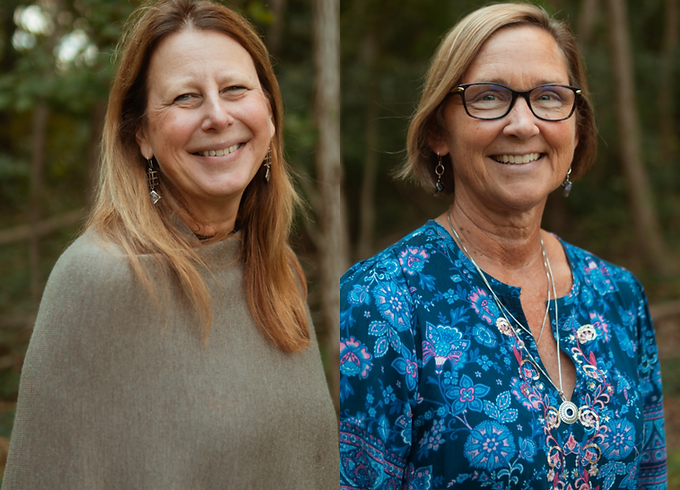The Song and Dance Festival program is starting to take shape. From the opening ceremony on Wednesday, July 1st to the evening of Sunday, July 5th, everyone will have the opportunity to immerse themselves in the festive spirit at concerts and events. The program is jam-packed with activities, but directors Diāna Kārkliņa and Andra Zommere promise that if you’re up for it, you might manage to catch every single one of them.
What does the festival program look like at the moment?
You could say that the program is coming together by itself. Our key festival events are, of course, the Festival Mass Choir Concert and the Folk Dance Spectacle around which all the other events are organized. From time to time, people have brought new ideas inspired by another festival or event, and all these contributions have gradually shaped the program.
We want to reiterate that our emphasis is on the participants and that’s why we are so excited about the festival parade, which, as far as we know, hasn’t taken place at any American festivals for a long time. The audiences are important, but we want to devote even more attention to the singers, dancers, actors, and all those people who spend months—even years—preparing for the festival and preserving our cultural heritage. The parade and opening events will spotlight the participants, yet everyone is, of course, invited to join in and enjoy.
What can you say about the cooperation with the people and administration of Grand Rapids?
We got an extremely warm welcome from the city administration. In fact, a representative of Experience GR group even came to the Toronto Song and Dance Festival to help out at our information desk. The main hotel, Amway Grand Hotel, has also been very supportive. When we ask, “Can we do this?” the reply has always been, “Of course!” This willingness to support us has greatly helped set the festive mood.
What about volunteer activity?
Volunteers have signed up for nearly every event and concert. No one had to be persuaded. Some of the event organizers have even formed their own teams and bolstered them with additional volunteers. It’s amazing how enthusiastic people are and how many ideas they bring to the table! The energy they have is simply indescribable, and it’s not just Latvians who want to participate. Preparing for this event has wonderfully reinvigorated the Latvian community in Kalamazoo and Grand Rapids. We are also getting offers of support from all over the country. It’s especially heartening to see new people getting involved.
Which festival events would you like to highlight?
One of the highlights will be the mass choir concert, organized by a passionate and dedicated team. In addition, there will be a folk dance spectacle, a theater performance, a rock concert, exhibitions, and markets. There’s also a children’s event and a sporting event planned. In addition, the New Choreography Showcase promises to be exciting. We’re in discussions about separate concerts featuring Latvian guest artists—dancers and choirs.
We are looking forward to the parade of festival participants. It’s been many years since latvian Song and Dance Festivals in the US have hosted a festival parade. We want to highlight the many participants during our opening ceremony, and then move right to the party.
Three balls are planned: Zaļumballe (the Open-Air-Dance), right after the parade; as its name suggests, this will be held outdoors—unless weather forbids it. On the evening of July 4th, there will be a Festival Ball and on Sunday, there will be a Farewell Ball for the participants.
Grand Rapids is a small city—almost all event venues are easily accessible on foot. According to our current plan, there will be at least seven venues in total, and we are planning for minimal event overlap. We’ve designed the schedule so that those who want to attend every event can do so. They may not have time for lunch, but they can always bring a sandwich (laughs).
What is the personal significance of this festival to you?
Diāna Kārkliņa: I have always hoped a Song and Dance Festival would take place in Michigan. Grand Rapids and Kalamazoo are places that became home to many refugee families after World War II. They hold a special significance for us. Thanks to the Latvian priest Laufman and the early immigrants from Valka, Eduards Dinvalds and Ernests Brože, nearly all the participants of the mixed choir “Dziesmu Vairogs” (Shield of Songs) from the German DP camp Valka found a new home in Kalamazoo. The choir continued to exist for many years after the era of the DP camps. The Grand Rapids festival would serve as a tribute both to this choir and to our past.
Andra Zommere: I was once again struck by the energy surrounding the idea of organizing a festival in Michigan. Several years ago, Pauls Berkolds, the head of the festival music program, was visiting Gaŗezers and, in his typical manner remarked, “We could hold a Song Festival in Michigan, Grand Rapids.” I laughed, saying, “You live in Los Angeles.” He replied, “I will soon be in Gaŗezers!” Someone else joined in, then another—and suddenly it happened! I decided then and there: how could I not join such a group of talented people!

